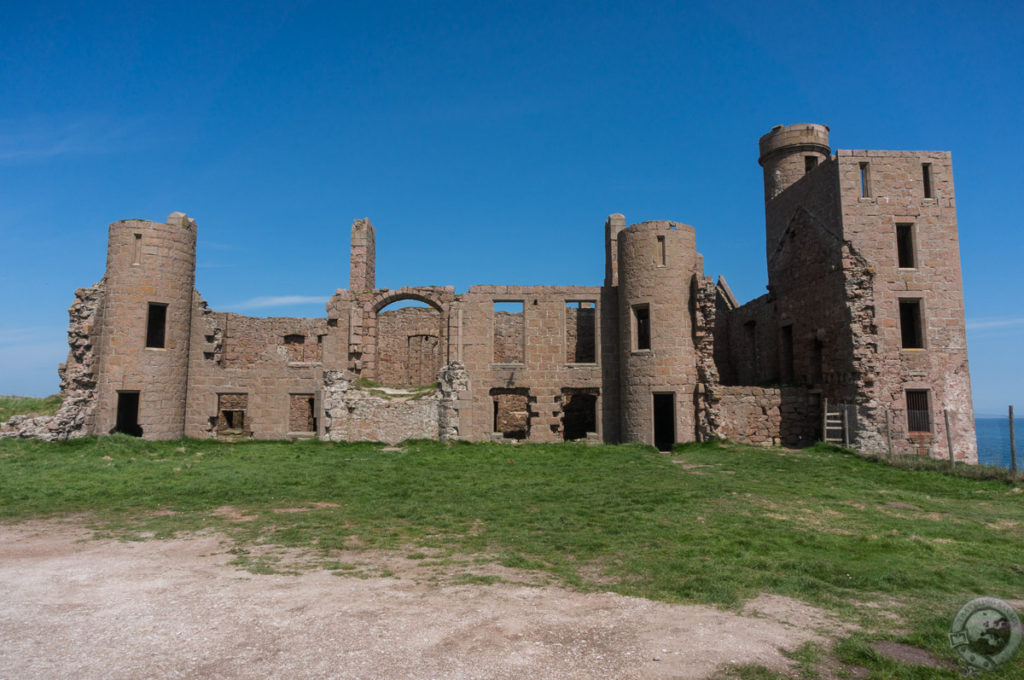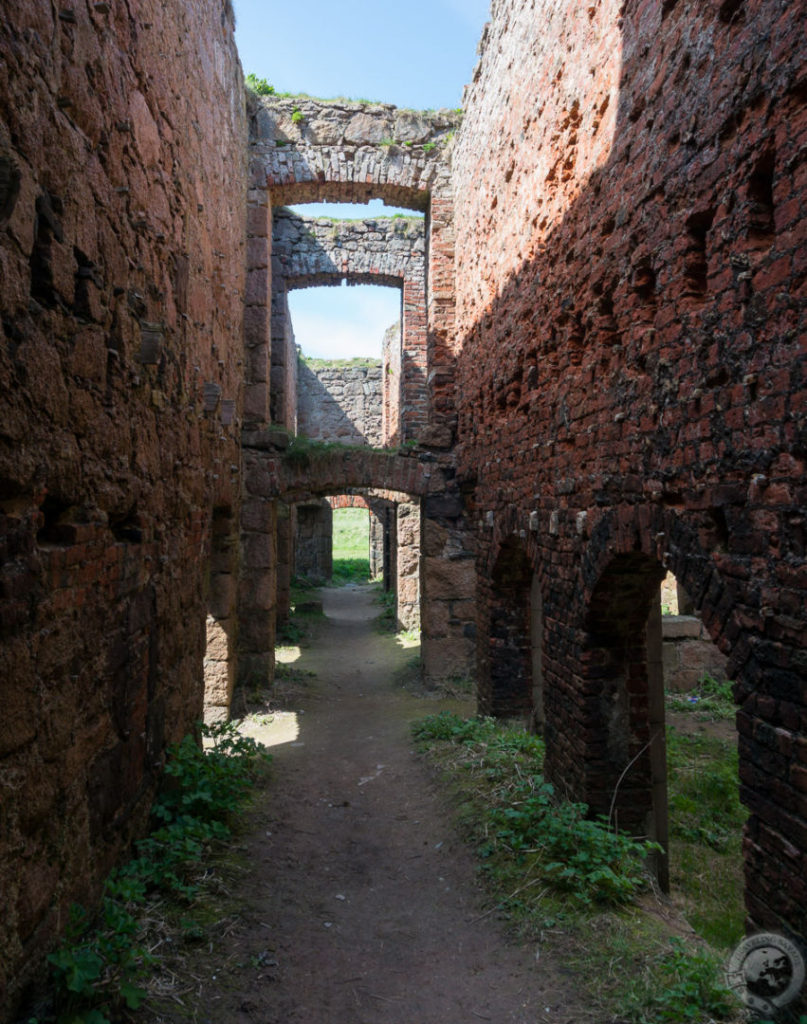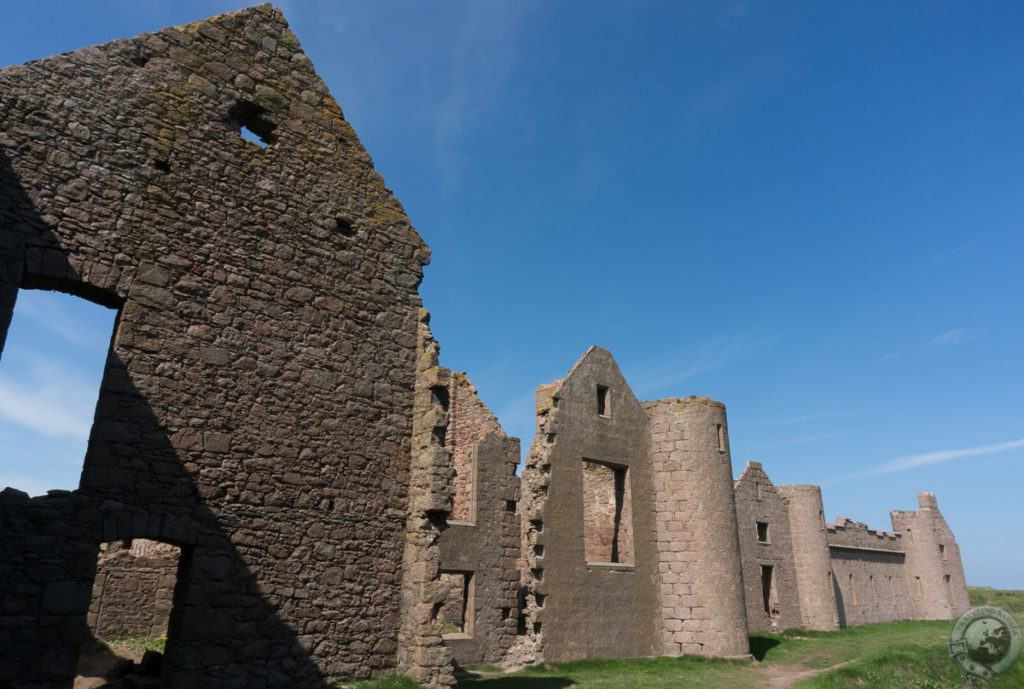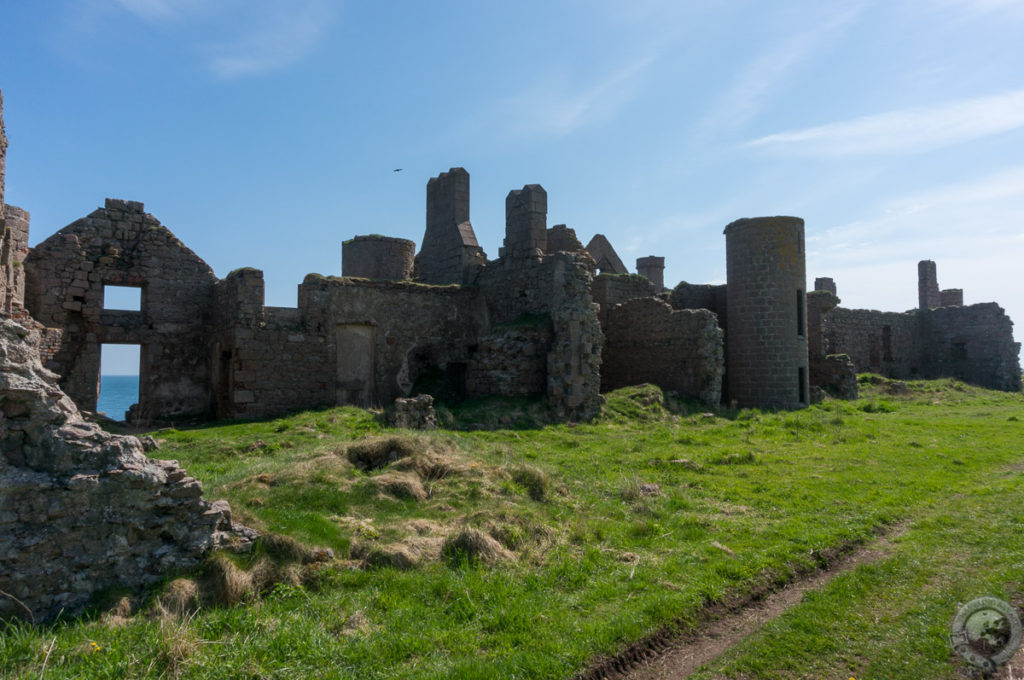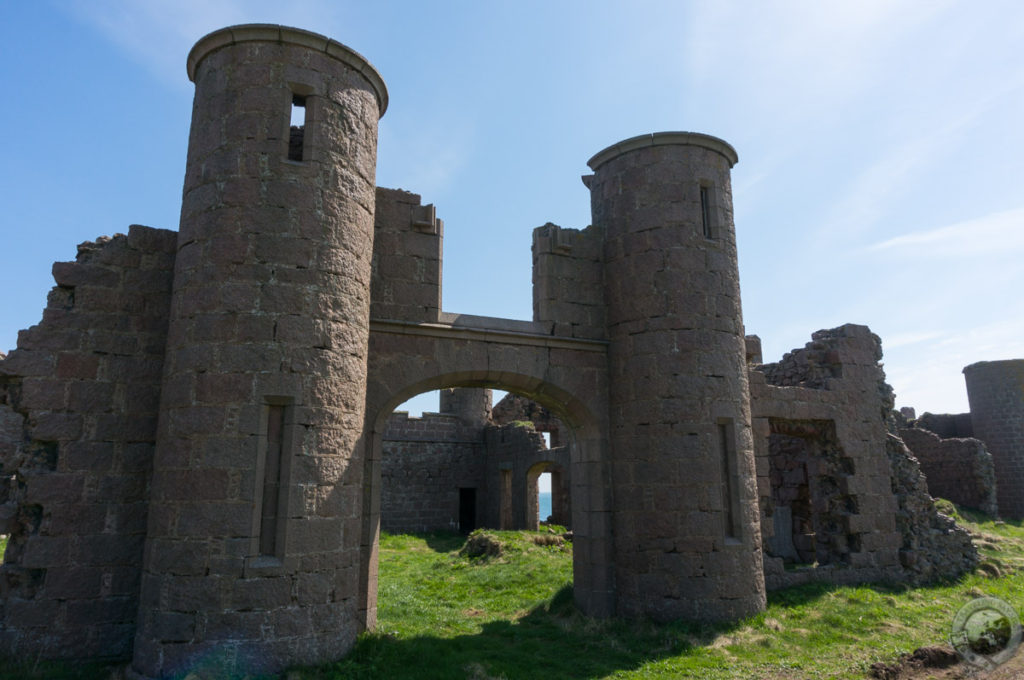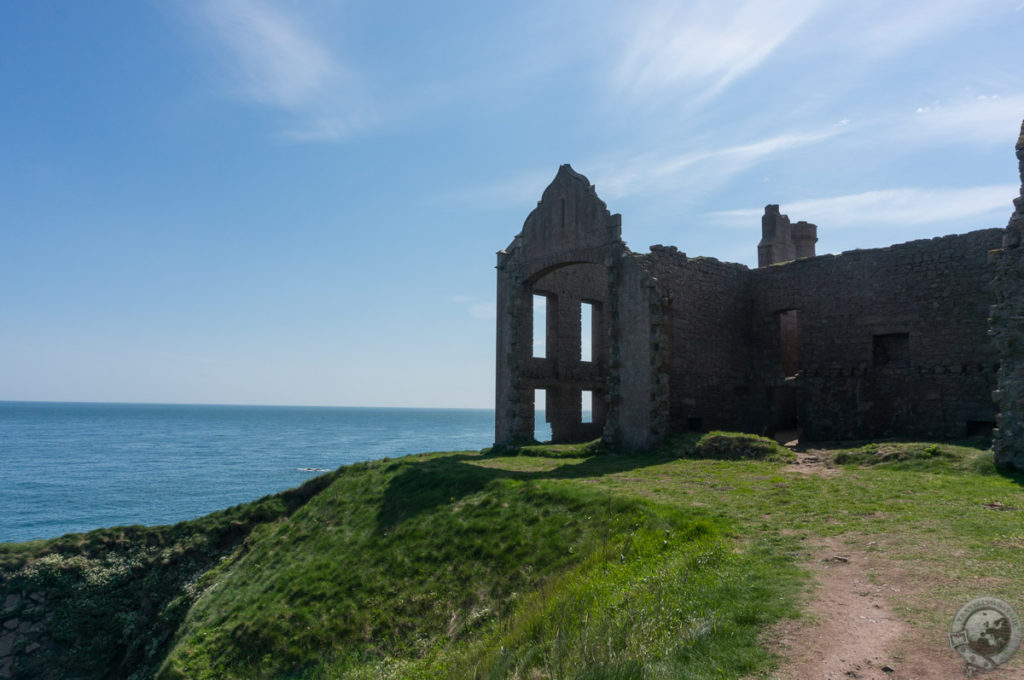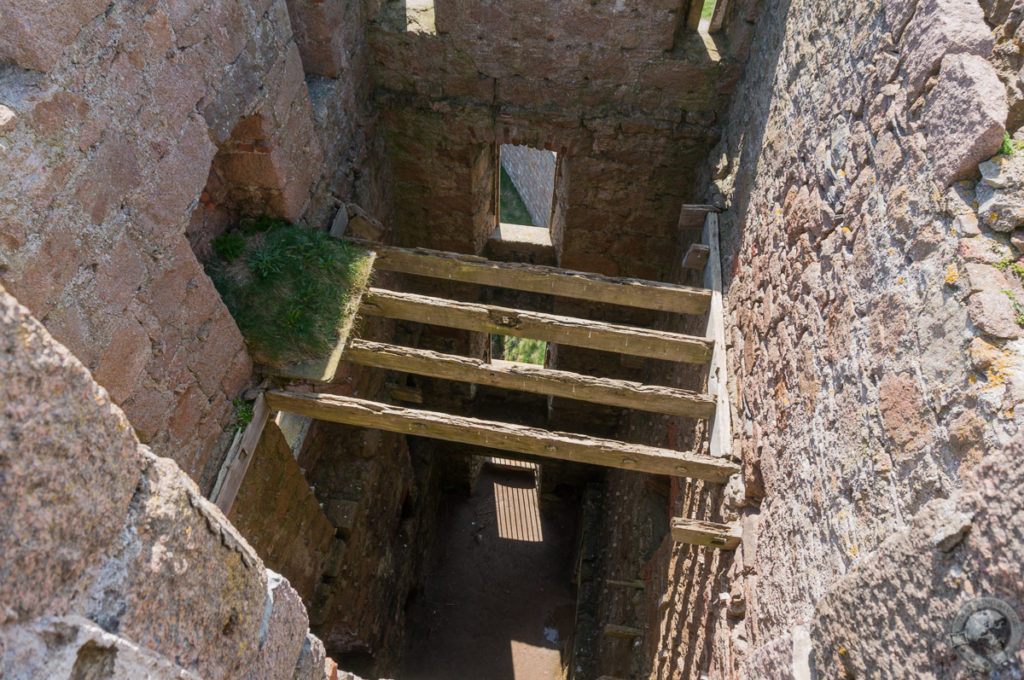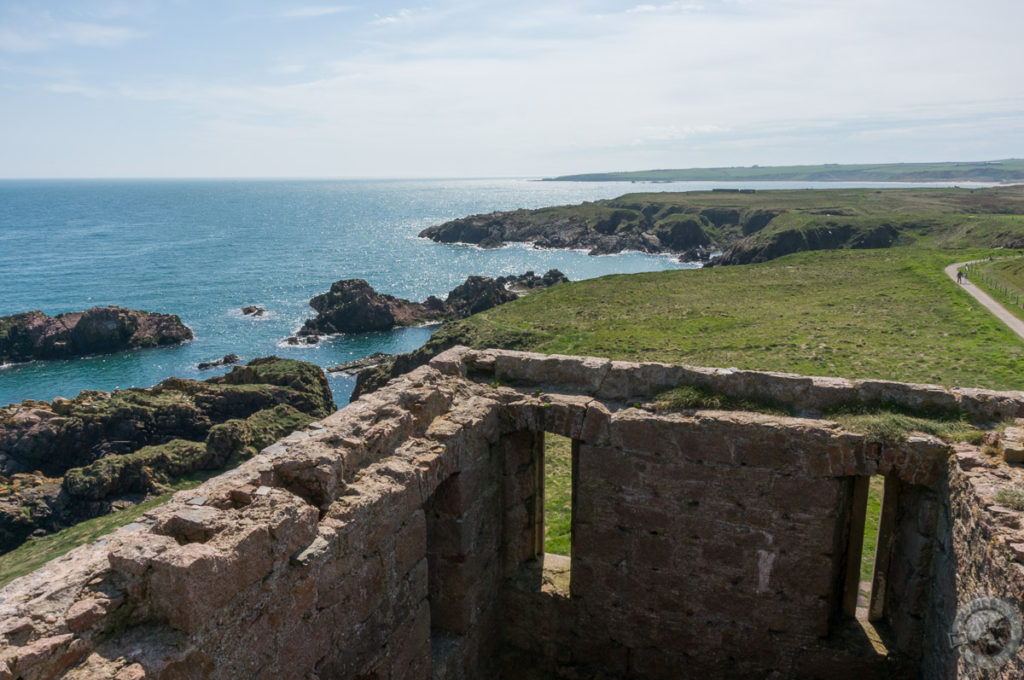Scotland’s “Castle Country” didn’t come by that moniker from the wishful thinking of marketing executives. The northeast of Scotland, and Aberdeenshire in particular, spills castles upon hill, glen, and cliff like finger bones from a stolen reliquary. No matter where you drive in this pastoral landscape you find beautiful bastions of history. Think Tolquhon, Dunnottar, and Drum. But for every shining example of stewardship and historical context lies a mouldering ruin like Slains Castle.
Slains Castle is foreboding. The name alone is enough to make one think twice about visiting the place, but the castle’s unsettling aspect and its link to a particular novel ratchet up the fear factor. I managed to visit Slains Castle — well, technically New Slains Castle — on a beautiful May day, but I can imagine the place on a typically dreich Aberdeenshire afternoon and it’s. not. pleasant.
Slains Castle is really interesting in that it’s one of the few castles I’ve visited where there seems to be literally no preservation happening whatsoever. Weeds and grass grow in hallways once lined with stone, staircases crumble beneath the weight of ages, mossed and dangerous (though still climbable), and garbage gathers in the darkened corners of shattered walls, the cast-offs of lost souls who view the highlands the same way they view themselves.
This really is a haunting place. Perhaps that’s why Bram Stoker purportedly used Slains Castle as inspiration for Dracula. Mr. Stoker spent quite some time at nearby Cruden Bay and traveled to Slains Castle to…clear his mind? Unlikely. Perhaps the bad juju of the place filled him with horrors he could only expunge with quill and ink.
Whatever the feel of Slains Castle, it does have a fairly majestic setting on the coast north of Aberdeen. The Earl of Erroll, chief of Clan Hay, built this castle in the late 1500s and it has undergone many renovations in the ensuing 400+ years. Various wings and galleries were added by the lords of the time, but the castle, originally called Bowness, seems to have escaped Scotland’s more scathing events.
The 20th Earl of Erroll sold the castle in 1913, ending three centuries of occupation, and the roof was removed in 1925 so the owners could avoid paying taxes. This is the architectural version of hospice as once the elements get inside the structure won’t last long. In 2004 Slains Castle was slated for preservation but, clearly, work has yet to begin.
I clambered over the bloodless bones of Slains Castle and even made the perilous ascent up one of the stairwells to the crumbled roof line. This was probably a foolish idea and I suggest you not follow in my footsteps. There are literally no warning signs anywhere on the grounds of Slains Castle, but it is most certainly a dangerous place to both body and mind.
Take care dear traveler.

